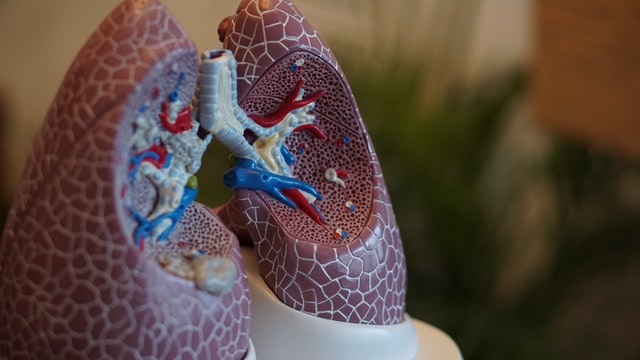ATI announced in early 2021 that the TEAS 6 exam, which nursing students must take before going to nursing school, would be phased out in June 2022 and replaced with the TEAS Version 7. What will the new version of the exam include? How will ATI TEAS 7 be different from the TEAS VI exam? Keep reading to find the answers to these questions, and the differences between TEAS 6 vs TEAS 7.
Let’s get started with our free TEAS practice test to pass the exam with a high score on your first attempt.
TEAS 6 vs TEAS 7: Question Types
There is only one type of question on the TEAS 6 exam and the paper-and-pencil version of the TEAS 7 exam, which is multiple-choice.
There are four brand new question types to be aware of for those taking the computer-based version of the exam: multiple-select, hot spot, supply answer, and ordered response.
Multiple-Choice
Multiple-choice questions provide four answer choices, but you can only select one as the correct answer. In addition to text, some questions include exhibits, charts, and graphics.
Multiple-Choice Strategies
- Pay close attention to the answer choices. Read each answer choice carefully and eliminate all incorrect answers one by one until only one answer remains. Often, test makers will provide more than one answer choice that appears reasonable at a glance.
- Avoid falling into fact traps. Don’t get distracted by an answer choice that is factually true but does not answer the question.
- Predict the correct answer. It is easier to avoid distractions and traps when you come up with the answer on your own because you will know exactly what to look for.
Multiple-Select
Multiple-select questions provide four or more answer choices, and more than one choice may be the correct answer. A prompt appears for these questions, asking you to “choose all that apply.” To answer a question correctly, you must choose all of the correct answers. If you choose any wrong answer choices and/or do not choose all of the correct answer choices, the question will be scored incorrectly; no partial credit will be provided.
Multiple-Select Strategy
- Evaluate each option thoroughly. Treat each one as its own “false or true” question, and determine whether it is correct based on the criteria provided in the question.
Supply Answer
There are no choices for answers in supply answer questions. Instead, the question asks you to “fill in the blank” or just answer the question provided. Numbers and words are both acceptable as answers.
Supply Answer Strategy
- Reread the question and your answer in full. If you are required to fill in the blank, make sure that you read the full sentence, including your answer, to ensure that your choice makes sense before moving on.
Hot Spot
In hot spot questions, you’ll see an image containing between two and five clickable areas. You must click on the area of the image that answers the question correctly.
Hot Spot Strategies
- Look at each clickable area carefully. Darting your eyes quickly from one option to the next is an easy way to miss the correct option accidentally. Take your time to consider each option before clicking the one you think is the correct answer.
- Hot spot questions are multiple-choice questions. Because these questions are essentially the same as any other multiple-choice questions, they can be handled in much the same way.
Ordered Response
Ordered response questions require you to order a set of given responses correctly. Each question provides between four and six responses, and you must drag each option from a left-hand box to a right-hand box. The entire question will be scored as incorrect if any response option is out of order, and no partial credit is given.
Ordered Response Strategy
- Take some time to go through the final order. Run through the sequence from beginning to end one last time once you have arranged the options in the correct order. You may find that an option is out of place or that an option was not placed where you thought it was.
TEAS 6 vs TEAS 7: Exam Contents
The most important difference between TEAS 6 vs TEAS 7 is the content:
ATI TEAS 6 ATI TEAS 7
Section Time Limit Number of Questions Section Time Limit Number of Questions
Reading 64 53 Reading 64 45
Key Ideas & Details 22 Key Ideas & Details 15
Craft & Structure 14 Craft & Structure 9
Integration of Knowledge & Ideas 11 Integration of Knowledge & Ideas 15
Pretest Questions 6 Pretest Questions 6
Mathematics 54 36 Questions Mathematics 54 38 Questions
Numbers & Algebra 23 Numbers & Algebra 18
Measurement & Data 9 Measurement & Data 16
Pretest Questions 4 Pretest Questions 4
Science 63 53 Questions Science 63 50 Questions
Human Anatomy & Physiology 23 Human Anatomy & Physiology 18
Life & Physical Sciences 8 Biology 9
Scientific Reasoning 7 Scientific Reasoning 9
Pretest Questions 6 Pretest Questions 6
Chemistry 9
English & Language Usage 28 28 Questions English & Language Usage 28 37 Questions
Conventions of Standard English 9 Conventions of Standard English 12
Knowledge of Language 9 Knowledge of Language 11
Vocabulary Acquisition 6 Using Language & Vocabulary 10
Pretest Questions 4 Pretest Questions 4
Reading Section
The Reading section of the TEAS 6 exam had 53 questions with a time limit of 64 minutes. The number of questions in the TEAS 7 Reading section has been lowered to 45, and the time limit has been lowered to 55 minutes.
Fewer questions will be geared toward your understanding of craft and structure, as well as key ideas and details whereas more questions will be used to assess your integration of knowledge and ideas.
The test questions often consist of a multi-paragraph passage and accompanying questions. Students will also be required to interpret charts, maps, labels, graphs, measuring tools, and directions.
- Identify the intent of the author
- Identify themes, main ideas, and supporting details
- Differentiate opinion from fact
- Draw conclusions and make inferences
- Identify structure and text features
- Define vocabulary
- Follow a set of directions
- Interpret graphic representations of information
- Determine where information could be found from an index of the table of contents

Math Section
The Mathematics section of the TEAS 6 exam had 36 questions with a time limit of 54 minutes. For the TEAS 7 exam, ATI has increased the number of questions as well as the time limit, allowing 57 minutes to correctly answer 38 questions.
The TEAS 6 Mathematics section focused primarily on assessing algebraic skills, whereas the TEAS 7 assesses your numbers and algebra skills with your measurement and data skills.
The TEAS test will assess some of the following objectives:
- Convert between fractions, decimals, and percents
- Add and divide mixed numbers and fractions
- Solve math problems containing proportions ratios, and rate of change
- Convert between Arabic and Roman numbers
- Solve equations with one unknown variable
- Solve inequalities and equations containing absolute values
- Organize and interpret data from graphs, tables, and charts
- Convert measurements
- Estimate metric quantities
- Measure the weight, dimensions, and volume of objects
Science Section
The Science section of the TEAS 6 exam had 53 questions with a time limit of 63 minutes. Compare to TEAS 6 questions, ATI has lowered both the number of questions and the time limit for the TEAS 7 exam, allowing 60 minutes to complete 50 questions.
The Science section of the TEAS 7 test is where you will see the most difference in comparison to the TEAS test version 6. Check out the official outlines:
|
ATI TEAS 6 |
ATI TEAS 7 |
||
|
Science |
53 Questions |
Science |
50 Questions |
|
Human Anatomy & Physiology |
23 |
Human Anatomy & Physiology |
18 |
|
Life & Physical Sciences |
8 |
Biology |
9 |
|
Scientific Reasoning |
7 |
Scientific Reasoning |
9 |
|
Pretest Questions |
6 |
Pretest Questions |
6 |
|
Chemistry |
9 |
||
As you can see, the TEAS 7 Science section has been expanded to include a Biology and Chemistry category, while the Life and Physical Sciences category has been removed completely.
The TEAS Version 6 allows you to complete 53 questions in 63 minutes, whereas the TEAS Version 7 allows you to complete 50 questions in 60 minutes.
The science subtest assesses a student’s knowledge of life science, scientific reasoning, the human body, and physical and earth science. This section is generally one of the most difficult for candidates. The following skills will be expected of candidates:
Describe the functions of the following systems: nervous, circulatory, digestive, respiratory, and immune systems.
- Describe general physiology and anatomy concepts
- Understand natural selection and adaptation
- Interpret the biological classification system
- Understand the parts of a cell and its corresponding functions
- Understand RNA and DNA
- Contrast photosynthesis and respiration
- Contrast mitosis and meiosis
- Use taxonomy
- Use the Punnett square and Mendel’s laws of genetics
- Apply the periodic table of elements
- Describe the properties of atoms
- Determine the properties of matter
- Calculate molarity and diffusion rates
- Interpret pH scale values
- Determine motion and force
- Describe the parts of an experiment
- Interpret scientific arguments
English & Language Usage Section
The English & Language Usage section of the TEAS test VI exam had 28 questions with a time limit of 28 minutes, giving you a rate of one minute per question. On TEAS 7, ATI has maintained the one-minute rate per question but increased the number of questions to 37 and the time limit to 37 minutes.
This section on the TEAS 7 is largely the same as it is on TEAS 6. The only significant change is that the TEAS 6 Vocabulary Acquisition category has been expanded from the TEAS 6 into the Using Language and Vocabulary to Express Ideas in Writing category in the TEAS 7 test.

The English and language usage subtest assesses a candidate’s knowledge of sentence structure, punctuation, grammar, spelling, and contextual words. The TEAS English test will assess the ability of a student to perform the following skills:
- Interpret subject-verb agreement rules
- Determine the meaning of words in a sentence from their context
- Identify and use various parts of speech including pronouns, adjectives, verbs, adverbs, and possessives
- Accurately use verb tenses
- Determine the correct spelling of frequently misspelled words, irregular plurals, compound or hyphenated words
- Identify the correct capitalizations of names, addresses, and titles
- Differentiate between simple, complex, and compound sentences
- Identify the correct punctuation of sentences
- Change from passive voice to active voice
Read more>> How hard is the TEAS test?
FAQs: TEAS 6 vs TEAS 7
What is the current version of the TEAS test?
On June 3, 2022, a new version of the ATI TEAS exam is expected to be released. During the transition period, nursing and allied health programs are likely to accept both versions of the TEAS exam but be sure to check with your individual programs.
Does the TEAS exam change every year?
The TEAS exam is updated about every 5 years. The TEAS 7 is scheduled for release in June 2022. The TEAS 6, the previous version of the TEAS was released in late 2016.
What version is the TEAS Test 2022?
You will likely take the TEAS 6, an earlier version of the TEAS, until June 2022. In June 2022, a new version of the TEAS is expected to be released. During this transition, your nursing program will most likely have a 6-month grace period.
What’s on the ATI TEAS 7?
The ATI TEAS 7 covers Reading, Science, Math, and English. The topics in each section have not changed, but on June 3, 2022, the number of questions per topic will.
Read more about the TEAS 7 at New TEAS Test
Is the TEAS test the same every time you take it?
Because the TEAS Test changes from time to time, you should be exposed to as many different questions as possible. In fact, numerous of the book’s questions appeared on the test word for word, and most of them were the same types of questions.
Why do nursing schools use ATI?
ATI provides a variety of assessment tools to assist nursing schools and students. These exams are intended to identify students’ strengths and weaknesses so that they can concentrate on their areas of need. There is a direct correlation between passing the ATI exams and passing the NCLEX exams.
Final Words
As you can see in this ATI TEAS 7 & ATI TEAS 6 review, the changes from TEAS 6 to TEAS 7 are not significant, nor is the difference between TEAS 6 vs TEAS 7. The test will be the same as before, with the same subject areas and topics. The number of questions has only increased or decreased slightly. That said, there’s no need to be concerned. Visit our TEAS practice test and start your studying. We have the most updated TEAS test questions for you to practice.




